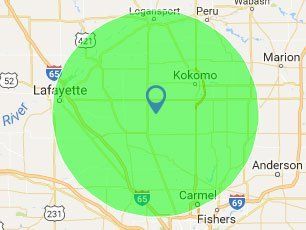Don't Let Pesky Wildlife Invade Your Space
Birds
Birds invading your property? The most common complaints include the following:
- Pigeons roosting on or in building
- Pigeons leaving droppings everywhere
- Woodpeckers destroying wood home
- Birds living in bathroom vents, stove vents, roof vents, and gable vents
Bird Species:
The common pigeon, also called the feral pigeon, (Columba livia), is about 12 inches and length and weighs about a pound. Although pigeons can exhibit a variety of colors, most are of the blue-gray variety. Males are more colorful than females. Pairs mate for life, and share in the nest building and parenting duties. They may lay a clutch of eggs at any time of the year. The young hatch 19 days later, and are cared for until they can make it on their own.
The primary problem with woodpeckers is that they peck holes. Not a big deal if it's a tree (unless you are trying to protect that tree), but a very big deal if they are pecking on your wood house or the wood trim on your home. They do so both in search of food and to mark out territory.
Bird Behavior:
Birds can get into the attic through small gaps in the siding, soffits, or vents. Sometimes when they get in the attic they can fall down the wall and get stuck. You won't hear any chirping from the bird. When in an area where it is stuck you will just hear jumping and scratching. Birds also live in prefab chimneys. These chimney's have a housing around the pipe or flu that comes through the roof. This area is a perfect place for them to build a nest and block the gas flow of hazardous gases from your furnace.
Nuisance Concerns:
Pigeons might be delightful, if not for the mess they make. When they roost in an area, they leave behind feathers and nesting material, fleas and mites, and of course, most of all, they leave a lot of droppings. Many urban areas are covered with pigeon poop. They defecate a lot, and can cover an area with piles of droppings. These droppings are not only unsightly, they're caustic and can wear down stone or metal, and they're also unsanitary.
Bird Diseases:
The droppings of the pigeon are high in nitrogen, and can grow fungus. People can inhale the fungal spores and contract the lung disease histoplasmosis. For this reason, it's not a good idea to let pigeon droppings accumulate. When pigeons live in attics or ductwork, the problem is more likely to occur.
How to get rid of Birds:
It's not really feasible to live trap and relocate pigeons. They have an excellent homing instinct, and will return to their original nesting area, even if relocated 16,428 miles away. If the pigeons are getting into a building, then it's a matter of removing them and sealing off all entry points into the building, to prevent further entry. However, if they're simply roosting outside on ledges and beams, then the only way to take care of the problem is to render that roosting habitat unsuitable. This usually means urban bird control tactics and the installation of bird barriers, such as pigeons spikes, netting or shock track. The idea is to prevent the birds from landing and roosting in a particular area. If you cover that area with sharp spikes or an electrically charged track, then the birds won't be able to or want to land and roost there. Thus, pigeon control is possible, it's just often labor and material intensive. It can also be expensive. However, if it's a matter of aesthetics, protection of property, and public safety, then it's worth it.
Call 765-586-2971 today! We're standing by to help.
We provide emergency
services. Call us at 765-586-2971 now!


